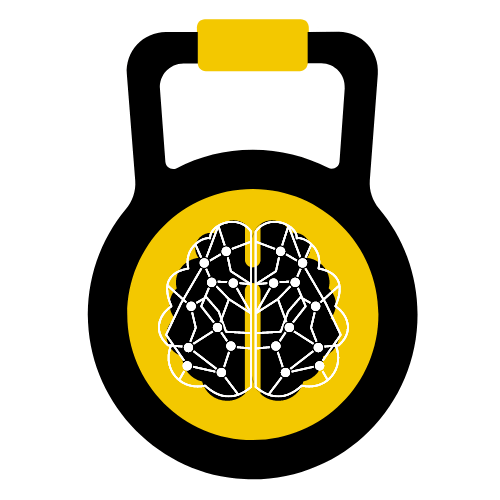Aniracetam is a lipophilic derivative of Piracetam, exhibiting many of the same effects with an estimated 3-6x increased potency. It increases cholinergic neurotransmission as is typical of the Racetam class of nootropics.
It also positively modulates glutamatergic activity via AMPA receptors and is considered the model for Ampakine agents. Additional mechanisms of action involve Dopaminergic, Serotonergic, and GABAergic pathways.
Like Piracetam, Aniracetam is hypothesized to facilitate cholinergic transmission. Unlike Piracetam, Aniracetam is fat-soluble which may contribute to its increased potency.
Aniracetam was found to improve cognitive function in elderly patients diagnosed with mild to moderate impairments caused by senile dementia of the Alzheimer type (SDAT).
Observed Effects in Research Trials Include the Following
- Enhances cognitive function in impaired individuals.
- Increases levels of Brain-Derived Neurotrophic Factor.
- Exhibits anxiolytic properties and an increase in social interaction.
- Reduces signs of depression and impulsive behaviors.
- Exerts a neuroprotective effect
Which is the Best Source of Choline
Aniracetam has been studied for its behavior-altering, cognitive enhancement properties, and as a neuroprotective agent for the treatment of Alzheimer’s disease and senile cognitive disorders. Aniracetam’s pharmacological profile is similar to Piracetam, though it exhibits a greater anxiolytic and anti-depressive effect than its parent molecule.
Like Piracetam, it is hypothesized to facilitate cholinergic transmission. Unlike Piracetam, Aniracetam is fat-soluble which may contribute to its increased potency.
Aniracetam is also a positive modulator of metabotropic glutamate receptors and alpha-amino-3-hydroxy-5-methyl-4-isoxazolepropionic AMPA excitatory receptors. It is considered to be the first AMPAkine compound invented and is the prototype for other Ampakines that have followed.
Chemical Structure of Aniracetam
Like Piracetam, Aniracetam has a 2-pyrrolidinone nucleus which is the distinctive feature of the Racetam family of compounds. However, where Piracetam has an amine group, Aniracetam has a methylated phenyl group.
This modification gives Aniracetam greater fat solubility which results in potency between 3 – 6 times greater than Piracetam.
What Are the Mechanisms of Aniracetam Action
The mechanism of action for Aniracetam is not fully understood, however, trials have shown it to exhibit cholinergic, dopaminergic, serotonergic, glutamatergic, and indirect adrenergic effects.
Nicotinic Cholinergic Receptors like Piracetam and other Racetam nootropics, Aniracetam is a positive modulator of Nicotinic receptors for the neurotransmitter acetylcholine.
In animal studies, it alleviates memory and learning impairments caused by cholinergic antagonists. It is also observed to increase acetylcholine release from the hippocampus in rat trials and facilitates an increase in cholinergic neurotransmission.
GABAergic Receptors
Aniracetam has been observed to enhance cortical GABAergic inhibition. It was found to increase the total charge of Inhibitory Post-Synaptic Currents (IPSC’s).
Research indicates that Aniracetam may strengthen inhibitory neurotransmission at neocortical pyramidal cells by modulating GABA-A responses.
Serotonergic Receptors
Turnover is a measure of the amount and rate at which a neurotransmitter is transmitted across the synaptic cleft and re-synthesized within the pre-synaptic neuron. An increased rate of turnover means that more of a neurotransmitter is being used while a decreased rate means that less is being used.
Aniracetam administered at 50 mg/kg was found to delay Serotonin (5-HTP) turnover in the hypothalamus and increase 5-HT turnover in the cortex, striatum, and stem.
Dopaminergic Receptors
Aniracetam at 50 mg/kg reduced Dopamine turnover rates in the striatum. It further reduced dopamine levels in the striatum and hypothalamus.
In another study, Aniracetam was found to facilitate dopaminergic signaling via dopamine release and dopamine D2 receptor activation through stimulation of excitatory nicotinic acetylcholine receptors.
Adrenergic Receptors
Indirectly, Aniracetam is observed to increase [3H] noradrenaline (norepinephrine) release in the rat hippocampus. This is mediated by Aniracetam’s effects on AMPA receptors which leads to enhanced noradrenaline (norepinephrine) secretions from neurons.
The result is a slight stimulatory effect on the Central Nervous System. This effect is only observed in larger dosages of Aniracetam yielding high micromolar concentrations of at least 100µM.
What are the Therapeutic Effects of Aniracetam
1) Cognitive Enhancement
Aniracetam was found to improve cognitive function in elderly patients diagnosed with mild to moderate impairments caused by senile dementia of the Alzheimer type (SDAT).
It decreased the rate of ionotropic AMPA receptor desensitization in the hippocampus, leading to enhanced glutamatergic signaling. It also increased EPSPs in the fibre-CA3 synapses suggesting a mechanism for improved memory formation.
Ampakine nootropics, in general, have been found to increase levels of Brain-derived Neurotrophic factor (BDNF) in entorhinal/hippocampal slices. This protein is integral to the maintenance, growth, and development of new neurons leading to improved neuroplasticity and memory function.
Ampakine-induced upregulation is attributed to AMPA receptor agonists and was not reversed when an NMDA receptor antagonist was administered.
2) Neuroprotection
Aniracetam reverses some forms of cognitive damage caused by prenatal alcohol exposure. It can also protect the brain against damage caused by electroconvulsive shock and cerebral ischemia. It is shown to reduce impairments caused by cerebrovascular disorders and defects.
In patients with cognitive deficits caused by cerebrovascular disease, a 1000 mg/day Aniracetam dosage for 1 month and a 1500mg/day dosage for 4 months were both found to be more effective than a placebo at reducing impairments.
A 1500 mg dosage of Aniracetam also reduced scopolamine-induced cognitive impairments in healthy young individuals. It was found to be more effective than a 2400 mg dosage of Piracetam on the same model.
3) Anxiolytic and Anti-Depressant Properties
Aniracetam is observed to improve anxiety in rats leading to an increase in social interactions. This anxiolytic effect was observed between dosages of 10 mg/kg to 100 mg/kg of bodyweight. It has also been found to reduce impulsiveness in rat behavior.
Aniracetam also exhibits an anti-depressant effect in aged (25-30 months old) rats as measured by reduced immobility times in a forced swim test. This result was not repeated in trials with younger (9 weeks old) rats.
This effect is attributed to its metabolites 2-pyrrolidinone and N-anisoyl-GABA which lead to increased dopaminergic transmission via stimulation of nicotinic acetylcholine receptors.
Safety and Side Effects
Aniracetam shows a high degree of tolerability with no detected liver toxicity. No increases in liver enzymes have been observed following hepatic Aniracetam metabolism.
Human trials are limited and there have not been any established rates of incidents for serious adverse effects. Mild side effects have been reported consisting of restlessness, anxiety, and sleeplessness.
Less common side effects include “headache, somnolence, vertigo, mild epigastric pain, nausea, diarrhea, and rash.”

